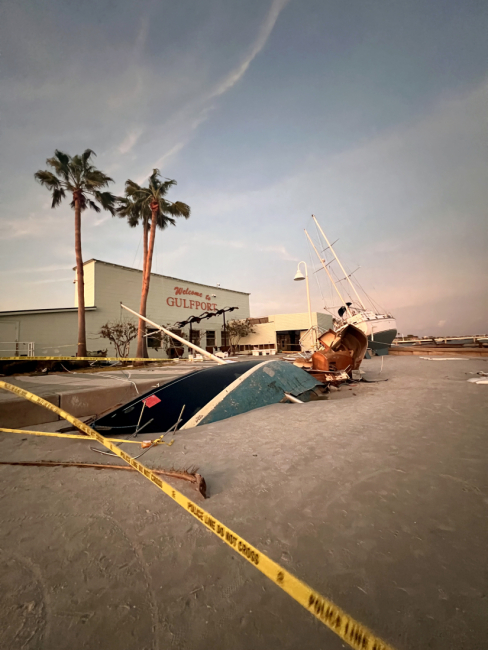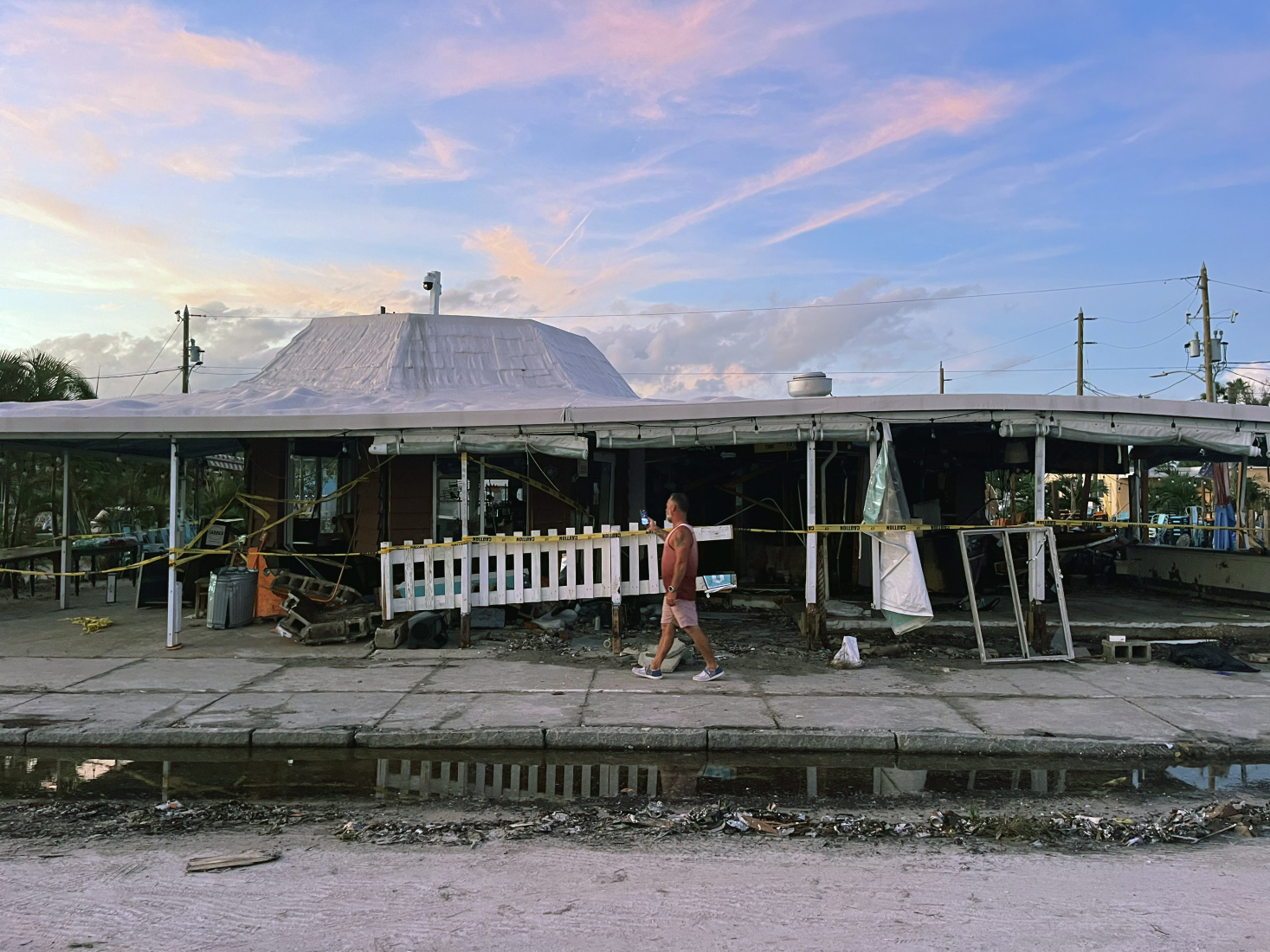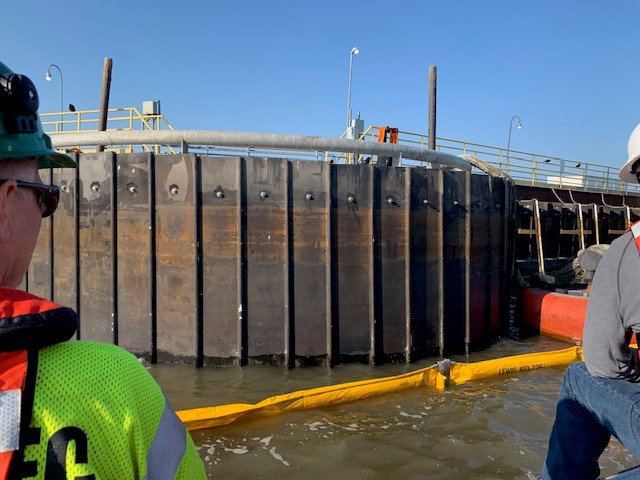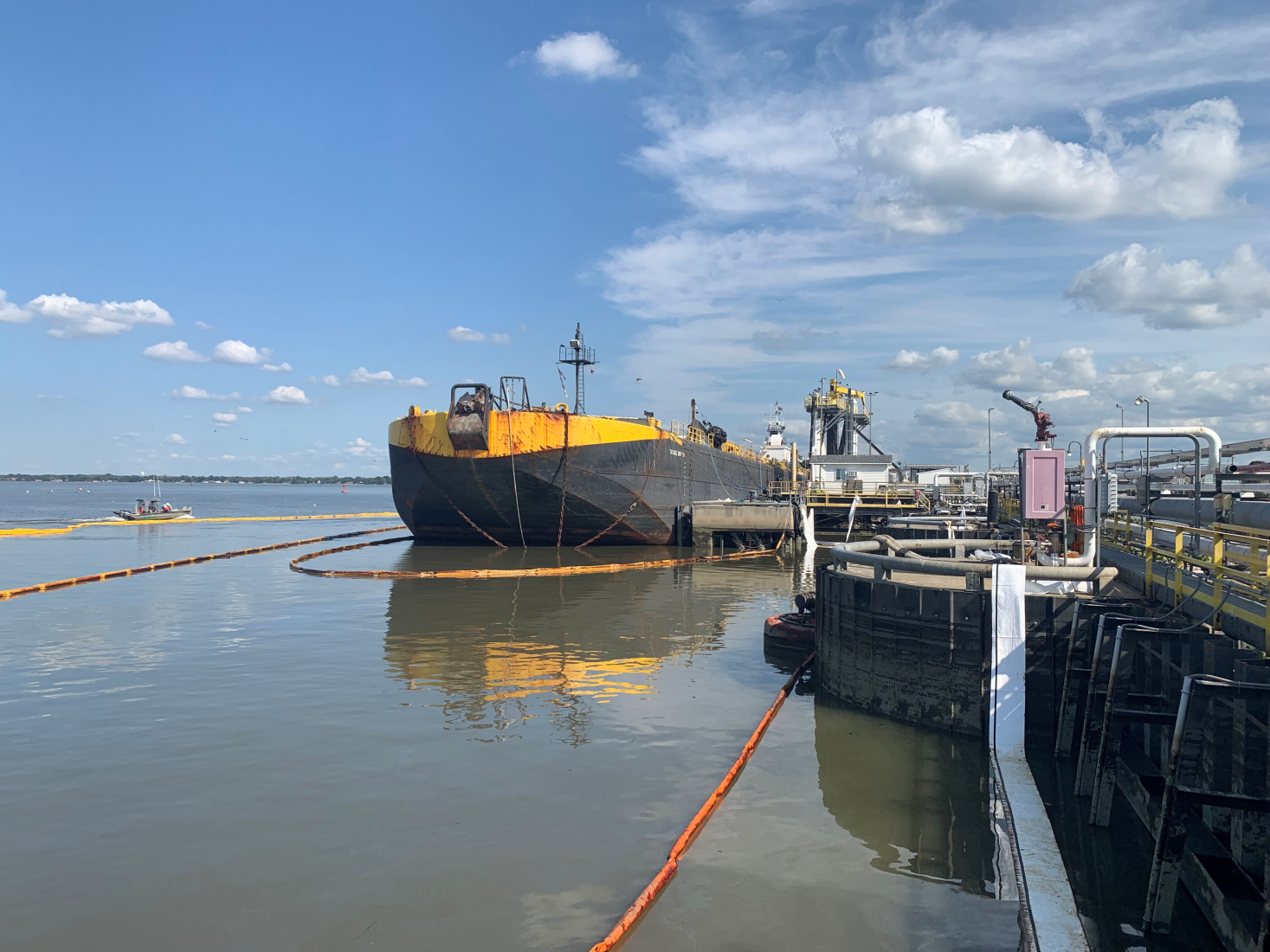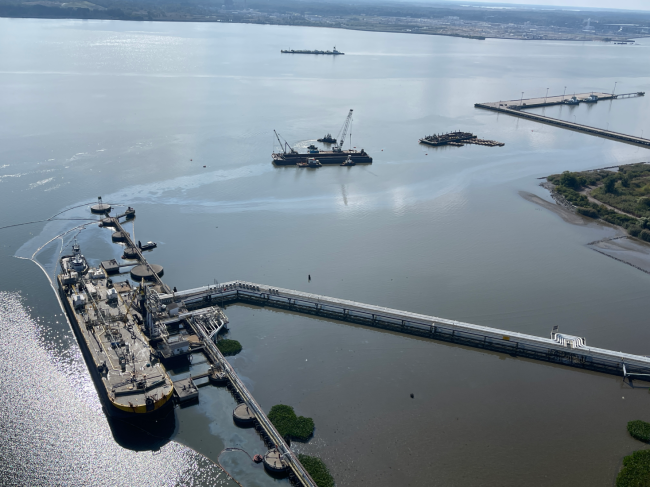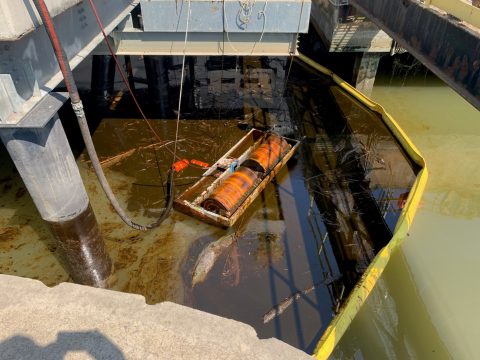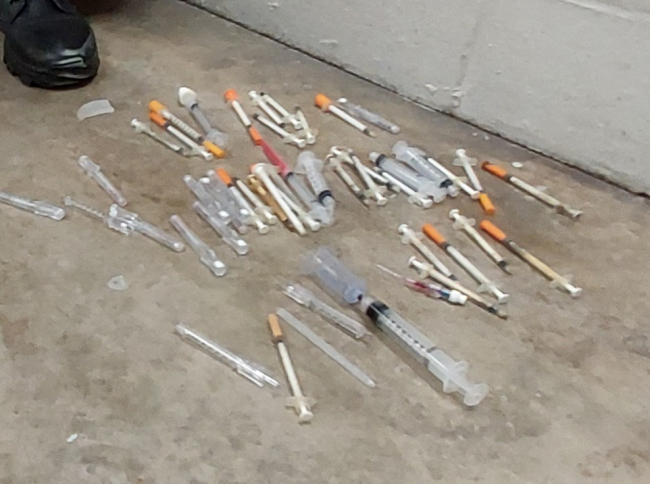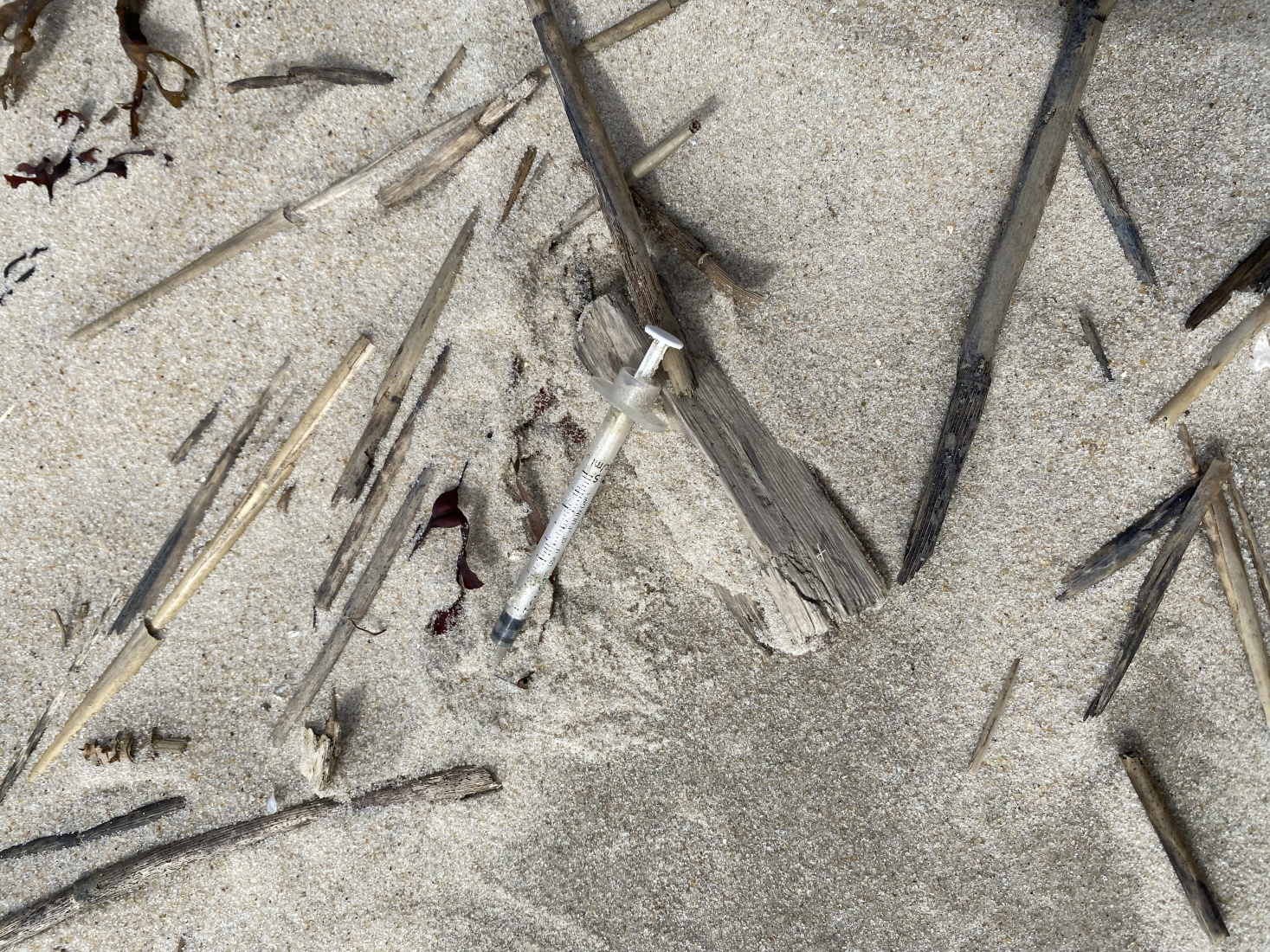Every month, NOAA’s Office of Response and Restoration’s (OR&R) Emergency Response Division provides scientific expertise and services to the U.S. Coast Guard (USCG), ranging from producing oil spill trajectories that estimate where a spill may spread; to identifying possible effects on wildlife and fisheries; to estimating how long oil may stay in the environment. We also receive requests to track and model other floating objects, such as log booms or shipping containers that have broken free, whale carcasses, fish die-offs, and algal blooms.
So far this year, OR&R has responded to 142 incidents. During September, OR&R provided response support for 19 incidents, including 13 new incidents in six states. Hurricane Helene came ashore in Florida, but ultimately affected six states (Florida, Georgia, South Carolina, North Carolina, Tennessee and Virginia), and one international response was conducted in Sarnia, Canada. Seven of the new incidents were actual or potential oil spills, two involved threats of pollution from hurricanes, three were chemical spills (or oil and chemicals mixed), and one was marine debris.
OR&R staff prepared 139 incident reports and documents, including six fate and trajectory analyses. Four of the incidents this month were unknown volumes, but eight of the incidents had volume estimates (no volume for the marine debris incident). Cumulatively, these incidents posed an approximate risk of more than 745,000 gallons of oil and chemicals.
(Note: All spill volumes are approximate and based on initial information that may be updated after further investigation.)
Here are some of the incidents we worked on during September:
Hurricane Helene
During Hurricane Helene, OR&R supported the USCG with responding to active pollution threats, importing spatial data into a common operating picture, analyzing overflight imagery, and preparing for post-hurricane marine debris issues.
On September 26, Hurricane Helene made landfall near Perry, Florida as a powerful Category 4 storm, bringing severe winds, extreme rainfall, destructive storm surge, and catastrophic flooding to Florida, the Southeast, and Southern Appalachians. The fourth U.S. hurricane landfall in 2024, Helene is the strongest hurricane on record to make landfall in the Florida Big Bend region.
NOAA Scientific Support Coordinators (SSC) deployed to the USCG Area Command in Miami, Florida and Sector Mobile Command to provide a coordinated approach to pollution and debris assessment and removal across federal and state agency efforts. OR&R supported the USCG with its response, responding to active pollution, such as from displaced vessels or overflowing tanks; importing data into the common operating picture, ERMA® (Environmental Response Management Application); analyzing imagery captured by the National Geodetic Survey; and preparing for post-hurricane marine debris issues.
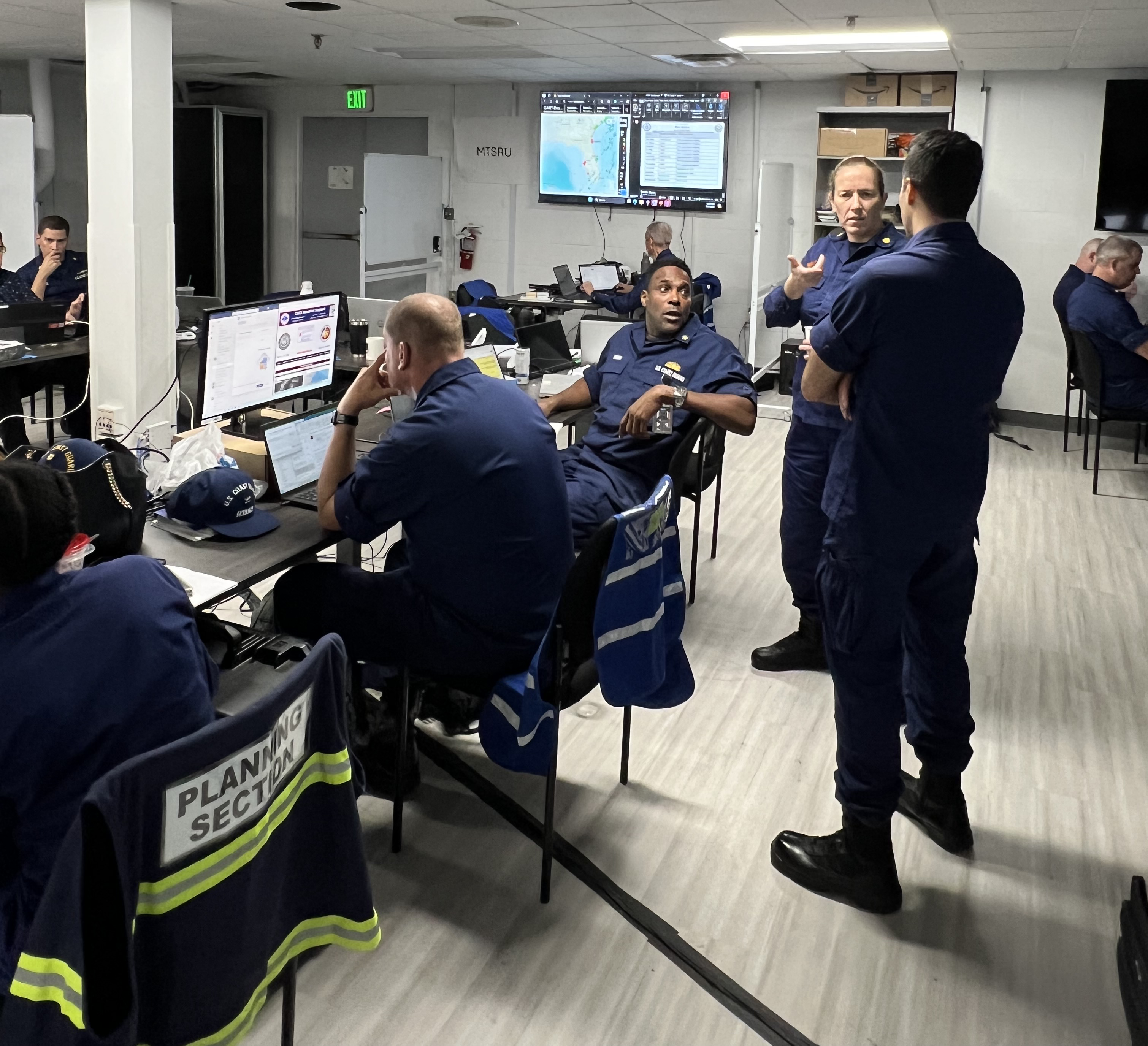
OR&R received a Mission Assignment from the Federal Emergency Management Agency to provide assistance, adding its staff of scientists and specialists to the federal force of over 3,200 personnel contributing expertise and functionality to the hurricane mission.
In the days that followed, damaging and life-threatening hurricane-force winds penetrated well inland over portions of northern Florida, Georgia, and the Carolinas. Damage included significant flooding, hundreds of displaced vessels, and residential damage; however, few major pollution incidents were reported.
OR&R specialists assisted with two sunken shrimp boats (the Dora F and Lady Raven) in close proximity to each other in the East Brunswick River in Brunswick, Georgia. In response to sheen observed in surrounding waters, USCG conducted lightering operations, and the U.S. Army Corps of Engineers conducted salvage and removal of the vessels. OR&R also supported the response to a release of a mixture of 1,000 pounds of sodium hydroxide and black liquor (a by-product of paper production) from a BWC terminal in Brunswick, Georgia caused by a tank overflow due to heavy rains. The product was contained and no response action by USCG was identified.
Three sunken vessels were assessed near Apalachicola and the NOAA SSC provided onsite support for removal actions. The NOAA SSC in Mobile assisted USCG in aerial assessments including uncrewed aerial systems operations to identify pollution threats in remote, difficult-to-assess areas in the Florida Panhandle.
No other observations of sheens or pollution were reported from overflights conducted by USCG air assets from Mobile Bay to Naples, Florida.
OR&R continues to monitor marine debris through NOAA’s Marine Debris Program. The NOAA Marine Debris Program participated in state-led debris discussions and provided resources for marine debris response, including the Florida Marine Debris Emergency Response Guide, and Best Management Practices for the Removal of Debris from Wetlands and Other Intertidal Areas.
The day after the storm made landfall, the National Geodetic Survey began flight missions to capture high resolution imagery of impacted areas for FEMA, partners, and the public to better understand the damage. NOAA's Hurricane Helene aerial imagery is publicly available to help all those affected assess impacts to their homes and communities. Aerial imagery is a crucial tool to determine the extent of the damage, to aid safe navigation, and to compare baseline coastal areas to assess the damage to major ports and waterways, coastlines, critical infrastructure, and coastal communities.
Using NGS data and images, OR&R and USCG identified issues of concern, including pollution and displaced vessels that may pose an environmental risk. Additionally, the USCG shifted its focus to support inland flooding in North Carolina and Tennessee, and monitored for further potential tropical storm development that may form in the Gulf of Mexico.
Oil Spill during Barge Loading Operation, Buckeye Oil Terminal, Wilmington, Delaware
To support the response to a fuel transfer spill in the Port of Wilmington, Delaware, OR&R provided spill trajectory and analysis, support for impacted wildlife, and determination of cleanup endpoints.
On September 12, the USCG notified the NOAA SSC of a fuel oil spill in the Port of Wilmington, Delaware, during a transfer from the Buckeye Terminal to the tank barge Double Skin 59. Responders estimated the spilled amount to be less than 4,200 gallons. At the request of the USCG, OR&R provided a spill trajectory, which predicts where spilled oil is likely to travel and which shorelines and other environmentally or culturally sensitive areas might be at risk.
A Unified Command was established between USCG, Delaware State, the Port of Wilmington, the city’s Office of Emergency Management, and the responsible party. A private oil spill removal organization deployed on-scene to conduct booming and skimming operations to help contain the oil. USCG overflights, uncrewed aircraft system overflights, and shoreline cleanup assessment confirmed that the shoreline did not appear to be impacted.
Federal officials were notified about the possible impacts to marine animals and other wildlife. Due to reports of oiled birds, Tri-State Bird Rescue was activated. NOAA and other trustees were notified about the impacted wildlife.
The SSC assisted in determining the final cleanup endpoints, or the appropriate degree and methods of cleanup to meet cleanup objectives and reduce impacts to natural resources, for the spill site. On September 20, all cleanup endpoints were met with no outstanding issues on the site.
Medical Waste: Virginia, Maryland, and Delaware Shorelines
After medical waste began stranding on mid-Atlantic beaches, OR&R provided hindcasting to help simulate the origin point of the waste.
On September 16, the Maryland Department of Emergency Management contacted the NOAA Mid-Atlantic SSC and Acting Marine Debris Coordinator about medical waste (primarily syringes, feminine hygiene products, and crushed plastic prescription bottles) washing ashore on Maryland's beaches. The USCG also contacted NOAA about medical waste washing ashore along the northern beaches of Virginia, specifically the Assateague/Chincoteague area. The waste stranding included mid-Atlantic beaches from Dewey Beach, Delaware to Assateague National Seashore, Virginia. Beach closures went into effect across the region.
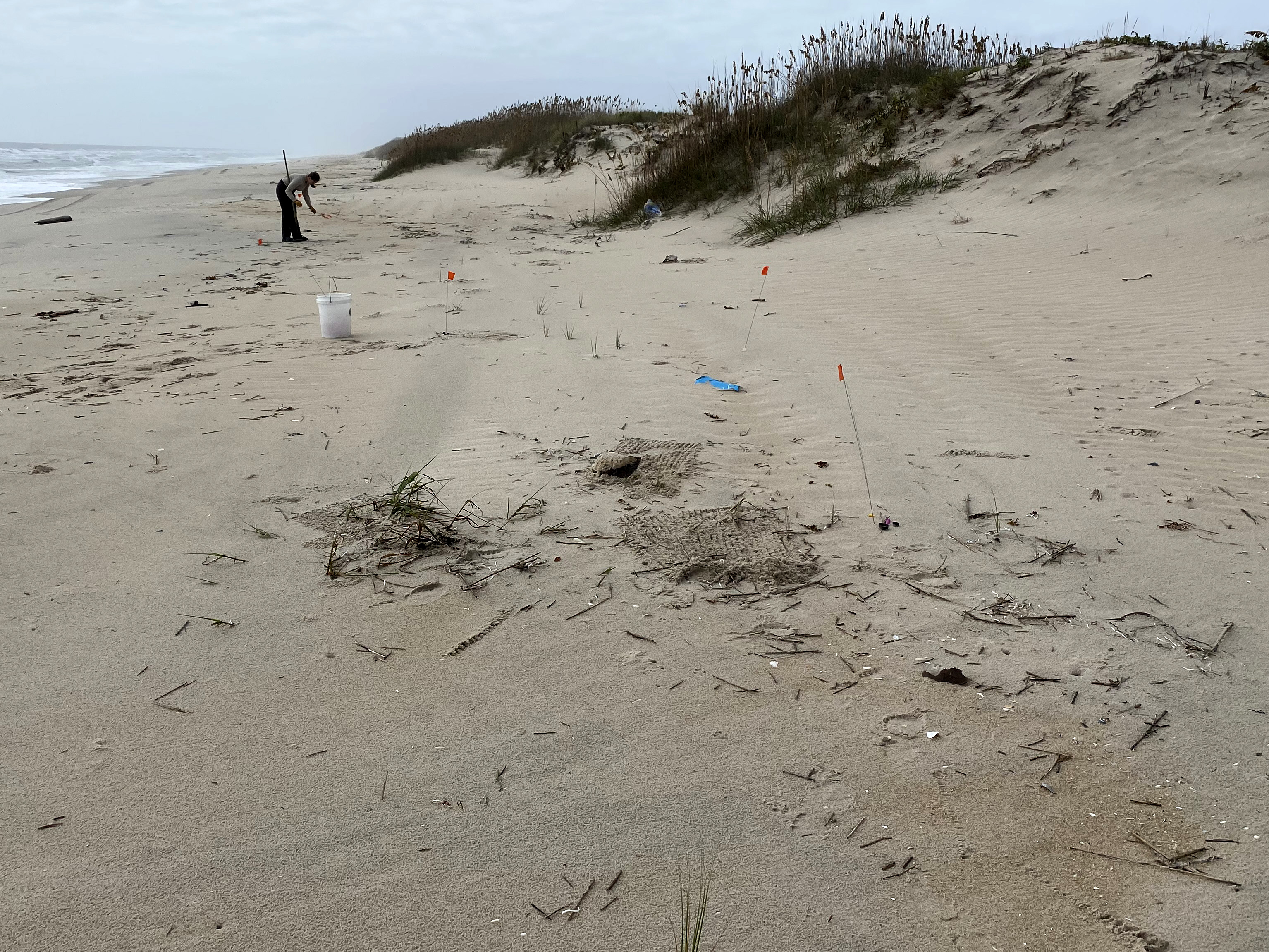
A virtual Joint Information Center was set up for the incident. At the request of the Maryland on-scene Coordinator, OR&R produced a hindcast to help simulate the origin point of the waste. The response involved over 60 state and federal agencies, including the USCG, NOAA, and the Federal Emergency Management Agency. Neither the federal or state agencies were able to identify a source for the medical waste.
Two Incidents at the Northwest Tip of the Continental U.S.
OR&R provided scientific tools and expertise to support two consecutive responses in Neah Bay, Washington, addressing pollution threats posed by a grounded, disabled sailboat and an adrift, burning crabbing vessel.
Vessel Grounding off Waadah Point; Neah Bay, Washington

On September 3, the NOAA SSC for the Northwest region was contacted by USCG Puget Sound about the 40-foot sailboat Dakota that went aground on Waadah Island in Neah Bay, Washington. The sailboat grounded in high winds after the engine overheated and the vessel lost power. The owners were rescued by helicopter and taken to a hospital in Canada, their country of residence.
Spill responders were initially unable to reach the vessel, and there was a potential discharge of 50 gallons of diesel. OR&R provided trajectory analysis and information about the expected fate and behavior of any spilled diesel which the USCG shared with the Federal On-Scene Coordinator and tribal partners.
After meetings with the local Makah Tribe, the USCG decided to manually drain the vessel’s tanks before removal. To support the fuel removal operation, OR&R provided spot weather forecasts to inform the operation’s start time. OR&R reviewed a resources-at-risk analysis (provided by Washing Department of Ecology), including fish and wildlife, federal or state listed species, federally designated critical habitats, cultural features, fishing and sustenance, recreation and tourism, and economic drivers. The analysis was shared with other federal and state natural and cultural resource trustees for any possible additions.
On September 6, contractors safely accessed the vessel and removed all of the accessible pollution, including 45 gallons of diesel fuel, one gallon of engine oil, and less than one gallon of coolant. There were no observed spills or other incidents during the pollution removal operations. Discussions on vessel salvage and removal are ongoing.
F/V Tarka II Fire; Neah Bay, Washington
On September 10, the USCG notified the NOAA SSC for the Northwest region that the Tarka II, a 59-foot commercial crabbing vessel, was on fire about three nautical miles southwest of Tatoosh Island, offshore of Olympic Coast National Marine Sanctuary. USCG Sector Puget Sound rescued two individuals from a life raft and brought them safely to shore.
The cause of the fire was reported as an exhaust fire. The vessel continued to burn as it drifted north towards the Strait of Juan de Fuca.
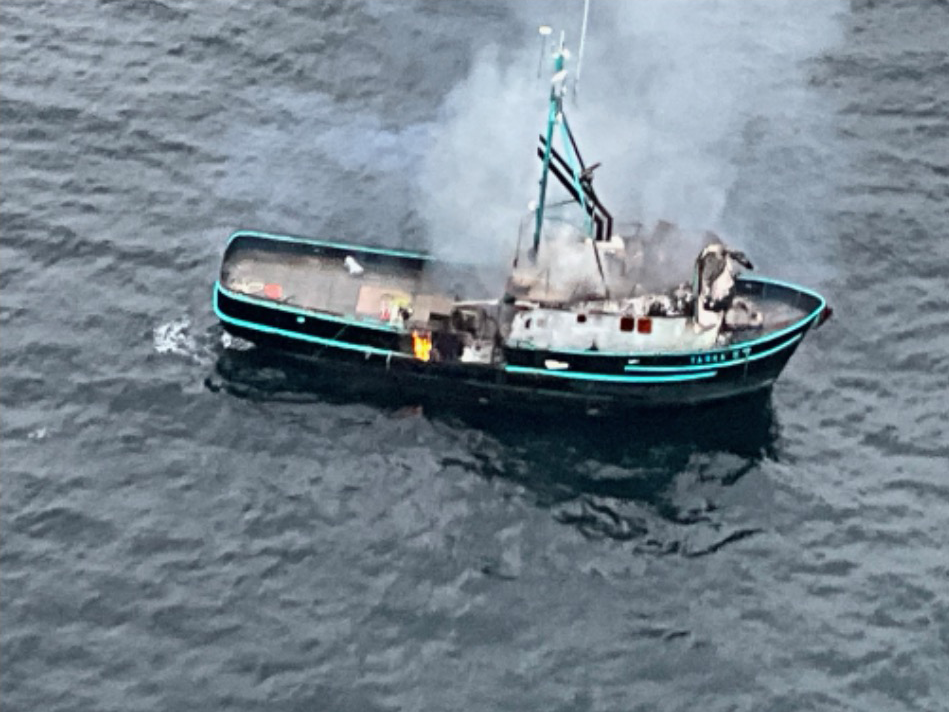
The captain of the vessel estimated that 1,000 gallons of diesel were on board, with a maximum potential of 4,000 gallons. Additionally, the vessel had a 10-ton chiller that used the refrigerant Freon. At the USCG’s request, NOAA provided phone support and trajectory/drift modeling for these potential spill risks.
The responsible party (RP) developed a tow plan, which was approved by the USCG; however, the RP was unable to locate the vessel in order to execute the tow plan. The USCG conducted an aerial and on-water search, locating an extensive sheen but no vessel. OR&R provided trajectory analysis of the maximum discharge of 4,000 gallons of diesel in the suspected location where the vessel sank. The USCG concluded that the vessel sank on the afternoon of September 12. There are no plans for additional overflights or searches for the vessel or sheen at this time. If ongoing pollution is noted, additional actions will be taken.
Other agencies involved in the response included Washington State Department of Ecology, Olympic Coast National Marine Sanctuary, the Makah tribe, the NOAA Marine Debris Program, and the National Marine Fisheries Service. Due to proximity with Canada, USCG also notified the Canadian government.

Here is the complete list of September’s incidents. Click on the links to find out more:
- F/V Pacific Bay; Willapa Bay, WA
- Diesel Discharge from M/V Defiant; Baltimore Harbor, MD
- Hurricane Helene; Big Bend Region, Florida
- Benzene Release at INEOS Facility; Sarnia, ON, Canada
- Cosmo Specialty Fiber: Facility Closure; Cosmopolis, WA
- Waste Oil Tank on Eroded Banks of the Tagayarak River; Tuntutuliak, AK
- Medical Waste; Virginia, Maryland, and Delaware Shorelines
- Mystery Sheen; offshore East Cameron, LA
- Oil Spill during Barge Loading Operation, Buckeye Oil Terminal, Wilmington, DE
- F/V Tarka II Fire; Neah Bay, WA
- Tropical Storm/Hurricane Francine; Louisiana Coast
- Vessel Grounding off Waadah Point; Neah Bay, WA
- Leachate Release into Tucker Bayou; LaPorte, TX

